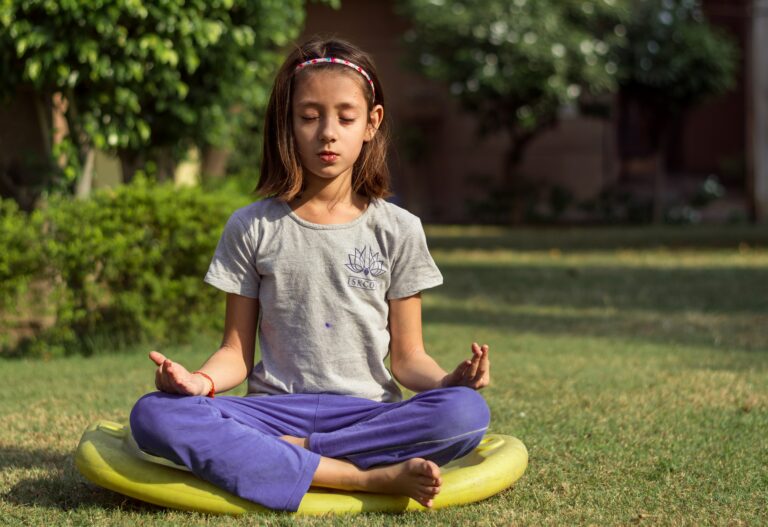Examining Types of Visuals In Remote Viewing
Visuals in Remote Viewing are images and videos including sketches and drawings that help provide a means for remote viewers to capture and record the information they pick up during a session
Remote viewing is a technique used to gather information about a distant or unseen target through extrasensory perception. This practice has been used for various purposes, including military and intelligence operations, scientific research, and personal development. Remote viewing is based on the idea that the mind can perceive information beyond the five senses, and that this information can be accessed through a process of focused attention and visualization.
Visuals play a crucial role in remote viewing. In this blog post, we will examine the different types of visuals associated with remote viewing, and how they are used to gather information about remote targets.
For anybody interested, this is just the latest in our series of posts about Remote Viewing.
Check out our related posts in the following links below;
Now…
Examining Types of Visuals In Remote Viewing
For today’s blog post, we will look at the different types of visuals used in Remote Viewing, what these are, how they work, and how these can be used by those keen to learn this technique to try this for themselves.
We shall begin with mental imagery otherwise known as visualization.
i.) Mental Imagery or Visualization
Mental imagery refers to the cognitive process of creating a mental representation of an object, event, or situation in the mind’s eye. In remote viewing, mental imagery plays a crucial role as it allows the viewer to visualize a target or a location that is beyond the range of the five senses.
Remote viewers use mental imagery to create a detailed description of the target. This process involves visualizing and describing the colors, shapes, textures, and other details of the target as accurately as possible.
The remote viewer may also use mental imagery to perceive the target’s sounds, smells, and tastes.
One of the most common techniques used in remote viewing is using Ideograms, a technique that involves quickly sketching a symbol or image that represents the target.
This initial sketch acts as a trigger for the viewer to access their mental imagery and to describe the target in greater detail.
What Is Gestalt Perception
Another technique used in remote viewing is “gestalt perception,” which involves perceiving the target as a whole rather than as individual parts. This approach allows the viewer to gain a comprehensive understanding of the target by visualizing it as a single image.
According To Topital.com
“The classic principles of the gestalt theory of visual perception include similarity, continuation, closure, proximity, figure/ground, and symmetry & order (also known as prägnanz). Others, such as “common fate,” have been added in recent years”.
Other Examples of Mental Imagery In Remote Viewing
Examples of mental imagery in remote viewing include visualizing a specific location, such as a building or a room, and describing its contents and layout.
Mental imagery can also be used to describe the appearance of an object, such as a vehicle or a piece of machinery, as well as its function and purpose.
In summary, mental imagery is a critical component of remote viewing as it allows the viewer to create a detailed description of the target that is beyond the range of the five senses.
Remote viewers use mental imagery techniques such as Ideogramming and Gestalt Perception to access and describe the target’s visual, auditory, and other sensory information.
III. Sketches and Drawings
Sketches and drawings refer to visual representations of a target or location created by remote viewers during a remote viewing session. These sketches and drawings can provide valuable insights into the target’s appearance, layout, and other key features that may be difficult to describe in words alone.
In remote viewing, sketches and drawings are often used in conjunction with other techniques such as mental imagery and ideogramming. Remote viewers may use sketches and drawings to help them visualize the target more clearly or to capture specific details that are difficult to describe verbally.
Sketches and drawings can also serve as a form of communication between remote viewers and their clients. When a remote viewer creates a sketch or drawing of a target, they can share it with their client to help them understand the target more fully.
Clients can use these sketches and drawings to validate the accuracy of the remote viewer’s description and gain a better understanding of the target’s features and layout.
Examples of sketches and drawings in remote viewing include drawings of buildings, landscapes, and other physical structures. Remote viewers may also create sketches of specific objects or items within a target, such as vehicles or machinery.
These sketches and drawings can help to provide a visual representation of the target that is more detailed and accurate than words alone.
In some cases, remote viewers may also use sketches and drawings to help them identify patterns or connections between different targets or locations.
By visually representing the target or location, remote viewers can gain a deeper understanding of the underlying structure and how it relates to other targets or locations.
IV. Maps and Diagrams
Maps and diagrams are visual representations of a target or location that can be created by remote viewers during a remote viewing session. These visual aids can help remote viewers to better understand the layout and structure of the target, as well as the relationship between different elements within the target.
In remote viewing, maps and diagrams are often used in conjunction with other techniques such as mental imagery, ideogramming, and sketches and drawings.
Remote viewers may use maps and diagrams to help them organize and connect different elements within the target and to gain a better understanding of how these elements are related to one another.
Maps and diagrams can also be used to communicate with clients and other team members who may be working on the same project. By sharing a map or diagram of the target, remote viewers can help others to visualize the target more clearly and to understand its key features and layout.
Examples of maps and diagrams in remote viewing include floor plans of buildings, diagrams of machinery or equipment, and topographical maps of natural landscapes.
Remote viewers may also create maps and diagrams that show the relationship between different targets or locations, helping them to identify patterns or connections that may not be immediately apparent.
V. Digital Images and Videos
Digital images and videos are visual representations of a target or location that can be captured and shared electronically. These digital media can be a valuable tool for remote viewers, as they provide a detailed and realistic representation of the target that can be analyzed and studied in great detail.
In remote viewing, digital images and videos can be used in a variety of ways.
For example, remote viewers may analyze digital images and videos of the target to gain a better understanding of its appearance, layout, and other key features.
They may also use these digital media to identify areas of interest within the target or to pinpoint specific locations where important information may be located.
Digital images and videos can also be used to communicate with clients and other team members who may be working on the same project. By sharing the digital media of the target, remote viewers can help others to visualize the target more clearly and to understand its key features and layout.
Examples of digital images and videos in remote viewing include satellite imagery of natural landscapes, photographs of buildings or structures, and videos of machinery or equipment in operation.
Remote viewers may also use digital images and videos to analyze the movement of objects or people within the target, helping them to understand the target’s behavior and underlying structure.
One advantage of using digital media in remote viewing is that it allows for a greater level of detail and precision than other types of visual aids. Digital images and videos can be zoomed in and analyzed at a granular level, allowing remote viewers to study even the smallest details of the target.
VI. In Conclusion
In this article, we have examined several types of visuals that are commonly used in remote viewing. These include mental imagery, sketches and drawings, maps and diagrams, and digital images and videos.
Each of these visual aids provides remote viewers with a unique way to understand and interact with the target and can be used in a variety of ways to support the remote viewing process.
The importance of visuals in remote viewing cannot be overstated. By providing a visual representation of the target, remote viewers are able to gain a deeper understanding of its underlying structure and features.
This can help them to identify areas of interest, pinpoint specific locations where important information may be located, and communicate more effectively with clients and team members.
By utilizing a variety of visual aids, remote viewers are able to more effectively engage with the target and gain a deeper understanding of its key features and characteristics.
Whether using mental imagery, sketches and drawings, maps and diagrams, or digital images and videos, visuals play a crucial role in supporting the remote viewing process.
FAQs
Q: What is remote viewing?
A: Remote viewing is a technique used to gain information about a target or location using extrasensory perception (ESP) or psychic abilities.
Q: How does remote viewing work?
A: Remote viewing typically involves entering a state of altered consciousness or trance, and then using mental imagery or other techniques to gain information about the target.
Q: Can anyone learn to remote view?
A: While some people may be more naturally inclined towards remote viewing or have a greater sensitivity to psychic abilities, anyone can learn to remote view with practice and training.
Q: What are the benefits of using visuals in remote viewing?
A: Visual aids such as sketches, maps, and digital images can help remote viewers to engage with the target more and gain a deeper understanding of its underlying structure and features.
Q: What are some common types of visuals used in remote viewing?
A: Some common types of visuals used in remote viewing include mental imagery, sketches and drawings, maps and diagrams, and digital images and videos.
Q: How can I improve my remote viewing skills?
A: To improve your remote viewing skills, it is important to practice regularly and to seek out training or guidance from experienced practitioners.
Q: Is remote viewing a reliable method for gaining information?
A: While the effectiveness of remote viewing may vary depending on the individual and the circumstances, many practitioners have reported success in using remote viewing to gain accurate information about targets or locations.
References;
Here are some references related to remote viewing and the use of visuals:
- “Remote Viewing: The Science and Theory of Nonphysical Perception” by Courtney Brown
- “The Essential Guide to Remote Viewing” by Paul H. Smith
- “Remote Viewing Secrets: A Handbook” by Joseph McMoneagle
- “The Reality of ESP: A Physicist’s Proof of Psychic Abilities” by Russell Targ
- “Remote Perception: The Magic of Remote Viewing” by Angela T. Smith
- “Visualization: Using Mental Imagery to Achieve Your Goals” by Denis Waitley
- “Sketching from the Imagination: An Insight into Creative Drawing” edited by 3DTotal Publishing
- “The Power of Maps” by Denis Wood
- “Visual Explanations: Images and Quantities, Evidence and Narrative” by Edward Tufte
- “Digital Visual Culture: Theory and Practice” edited by Anna Bentkowska-Kafel, Trish Cashen, and Hazel Gardiner
These references cover a range of topics related to remote viewing, mental imagery, and the use of visuals in understanding and interpreting information.
Final Word
If you have found today’s content helpful please like and share and if you have any questions regarding the information discussed in today’s post please let us know in the comments section below
Many thanks
Alex for SecretGardenofMind.com
Contact us ay Xanderchakra@gmail.com




